How will the development of fusion energy proceed in the future?

The chase for fusion energy
https://www.nature.com/immersive/d41586-021-03401-w/index.html
Thermal power generation and nuclear power generation are mainly used as general power generation methods, but they all have major drawbacks, such as causing climate change and causing environmental pollution. Although the use of renewable energy such as solar power generation is increasing, for example, since solar power is not an energy source that can always be used, there remains a problem that 'a stable energy supply cannot be achieved'.
From the above background, 'fusion energy' is attracting attention as a potential solution to energy problems. Fusion energy was once said to be 'impossible', but it has become a reality due to technological advances. Along with this, development is being carried out not only by national institutions but also by private companies, and at the time of writing the article, more than 30 private companies around the world are working on fusion energy development. On the other hand, the company's outlook that 'commercialization of fusion energy will be realized within the next 10 years' aims to raise funds from investors, and researchers who do not belong to private companies are 'too optimistic'. It is said that.

The fusion research itself began in the early 1900s and is not new. Hydrogen bombs using fusion were invented in the 1950s, and since then researchers have sought ways to better control fusion and enable energy production.
Existing nuclear power plants utilize the 'fission' of heavy atoms such as uranium, but fusion energy, as the name implies, exposes the nuclei of light atoms such as hydrogen to high-temperature, high-pressure environments. The energy is taken out by fusing with. A common method is to fuse the nuclei of deuterium (D) and tritium (T), which are isotopes of hydrogen. At this time, some radioactivity is generated in the form of short-lived neutrons, but fusion energy is said to be safe and have little impact on the environment because it does not produce long-lived radioactive waste like nuclear power generation. I am.
The major challenge for achieving fusion energy is to 'retain the charged plasma generated by fusion at a temperature of about 100 million Kelvin, which is higher than the center of the sun, in the reactor.' Many researchers use a magnetic field to keep the plasma inside the reactor, but keeping the plasma enough to extract energy is said to be a daunting task. Fusion energy research is inevitably centered on national projects, as these experiments require very large facilities and large amounts of funding.
The world's first commercial-scale fusion reactor is scheduled to start operation in 2025, with 35 countries including Japan cooperating --GIGAZINE

One of the benefits of increasing attention to fusion energy and involving private companies is the diversification of approaches to fusion energy. Originally, the method called 'tokamak type ' was common for fusion energy. It uses a powerful superconducting magnet to confine the plasma in a ring-shaped container, which is also used in ITER.
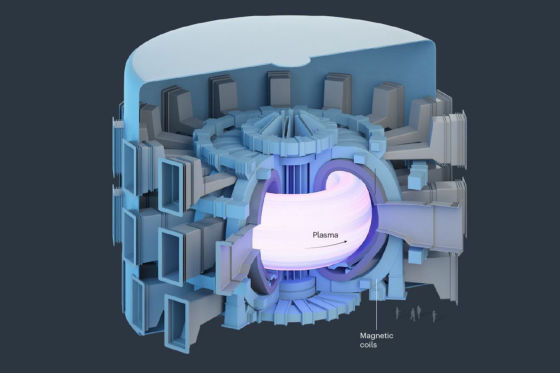
Meanwhile, Tokamak Energy of the United Kingdom has succeeded in developing a smaller spherical tokamak device.
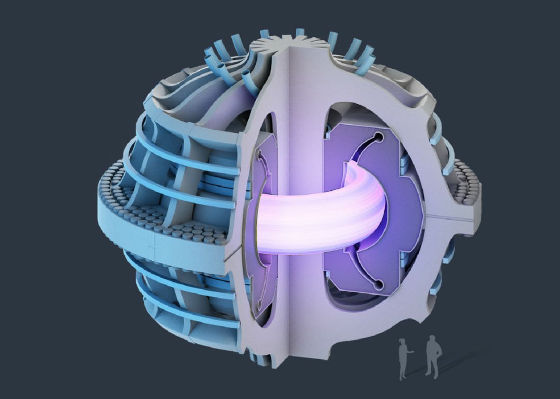
TAE Technologies develops a linear reactor. It uses a beam-driven magnetic field reversal arrangement.
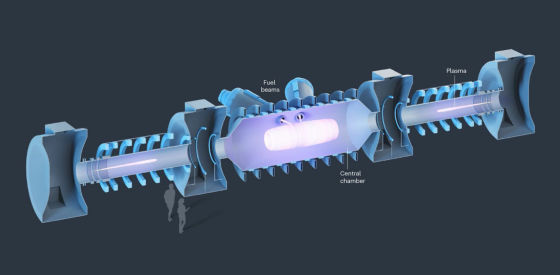
Invested by Amazon CEO Jeff Bezos,
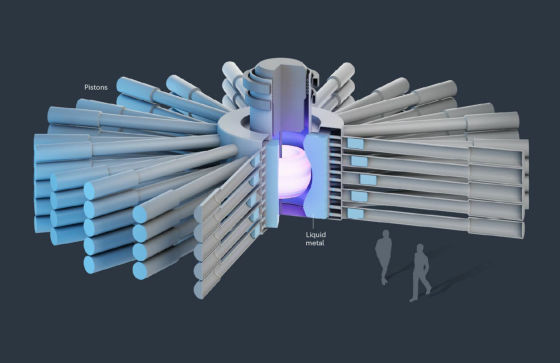
There is also

Compared to ITER, which is based on national cooperation, nuclear reactors developed by private companies have the advantage of being smaller and cheaper. On the other hand, compared to ITER, the emphasis is on 'faster commercialization,' and the risk of failure increases. The following is the reactor development process planned by ITER and private companies. Purple represents private companies and light blue represents ITER. While the actual operation of ITER is said to be after 2035, many private companies are aiming for commercialization by 2035.
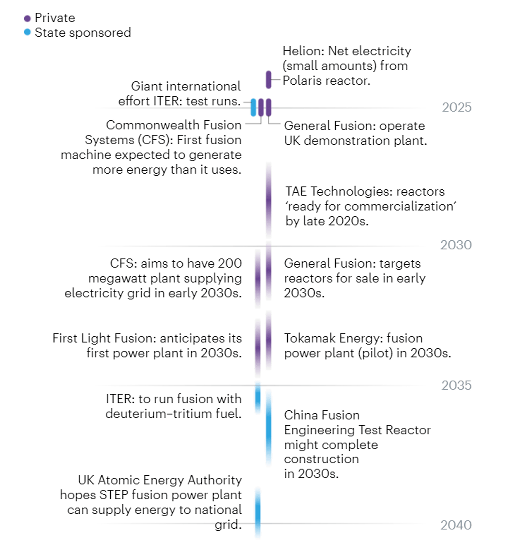
Profit can be expected for both private companies and national projects to proceed side by side. This is because national projects can obtain information on research and development from private companies, while private companies can also build technology based on national projects and receive support from the government. As with the development of the COVID-19 vaccine, partnerships between the public and private sectors are considered to be the key to progress.
Related Posts:
in Science, Posted by darkhorse_log







